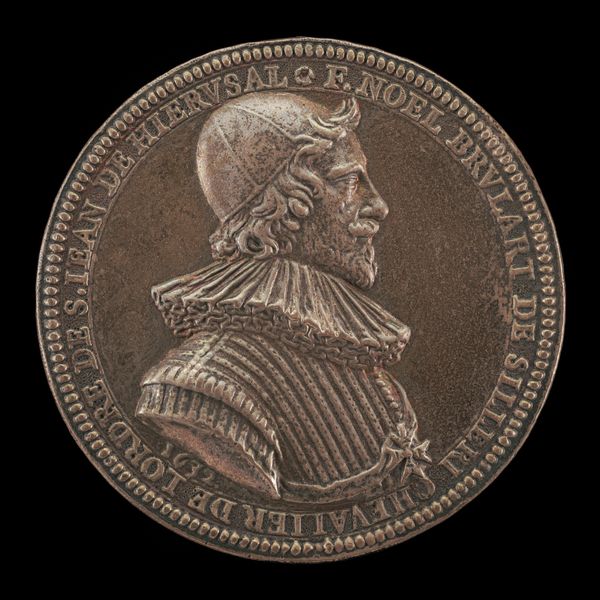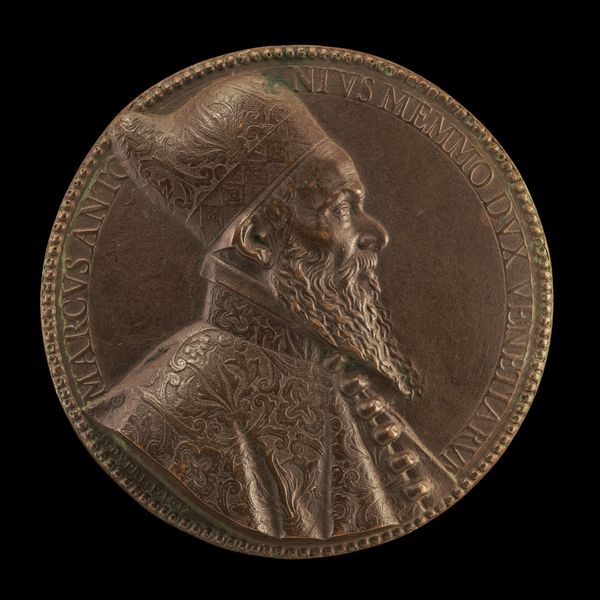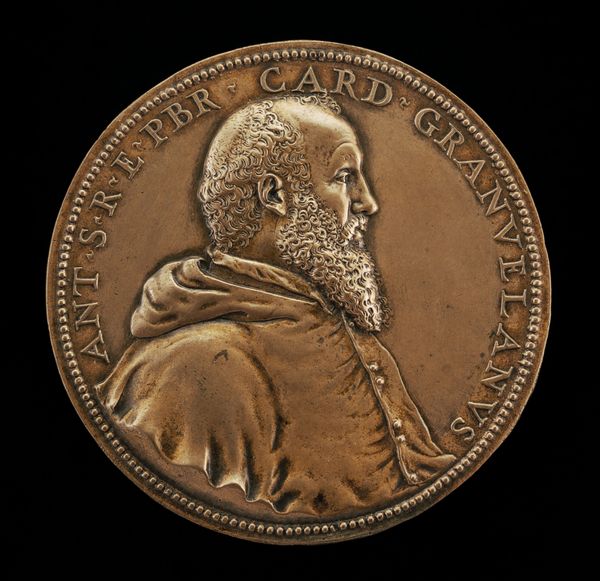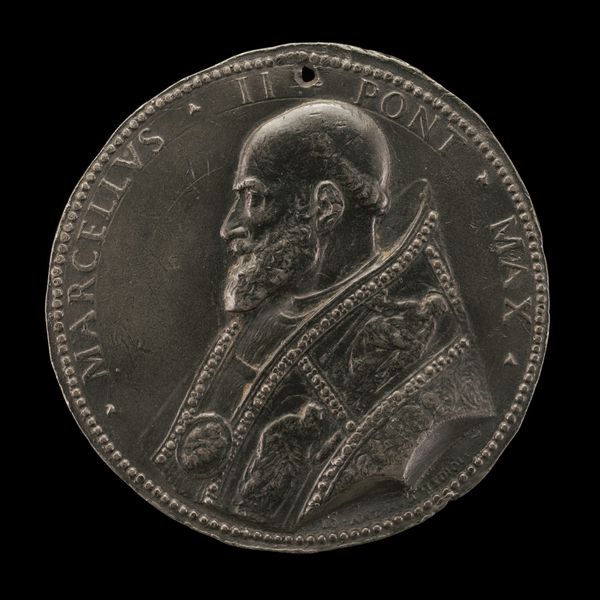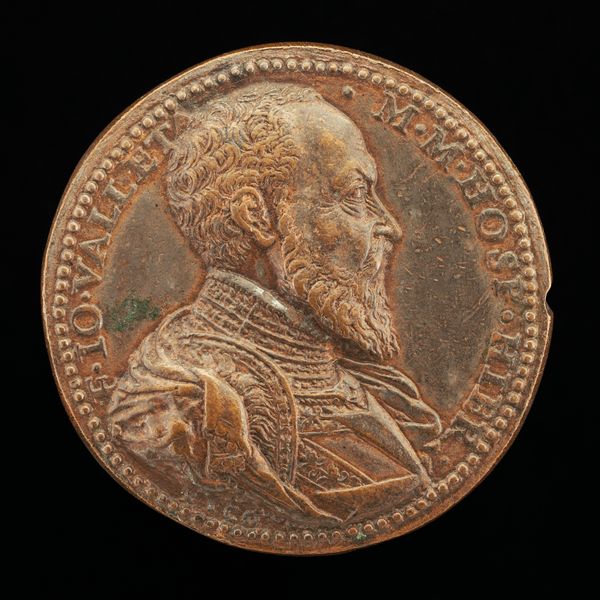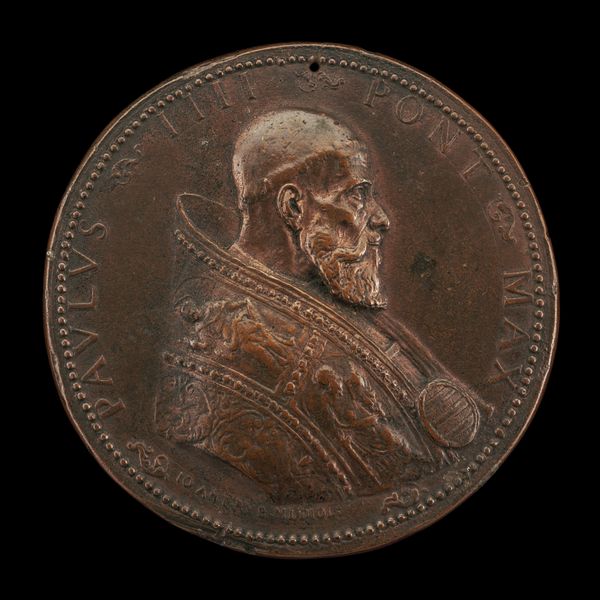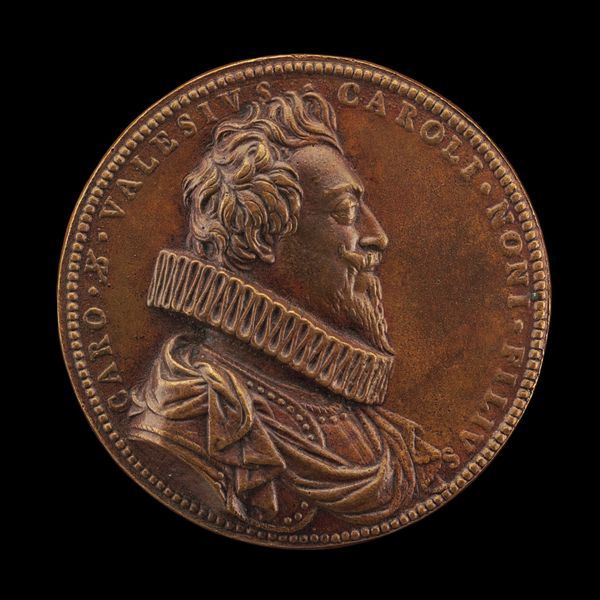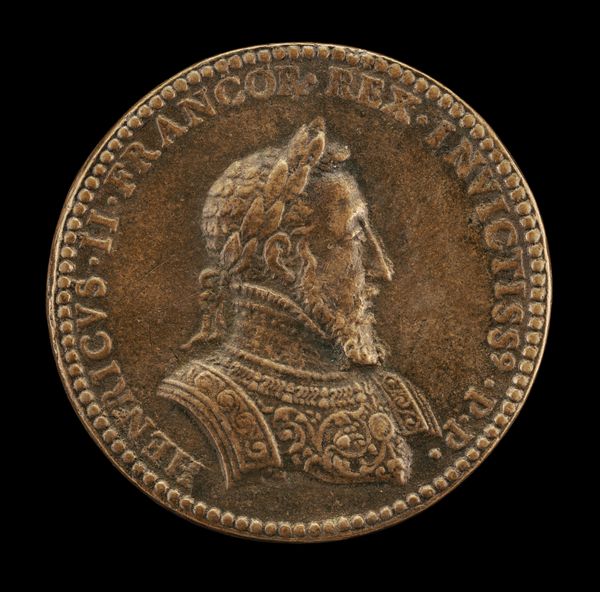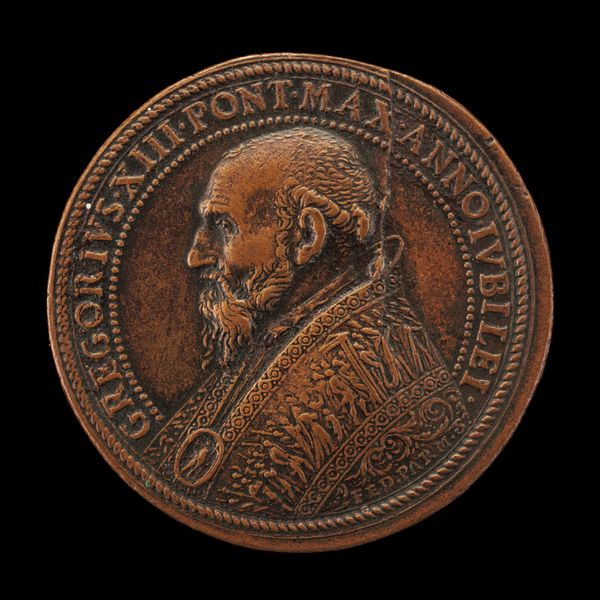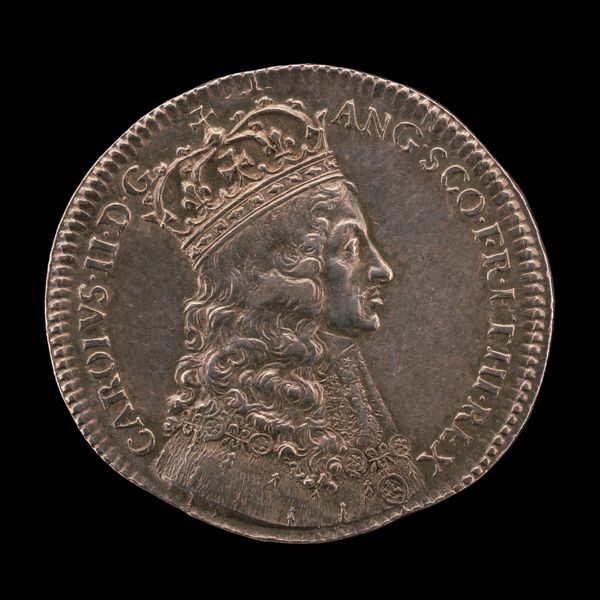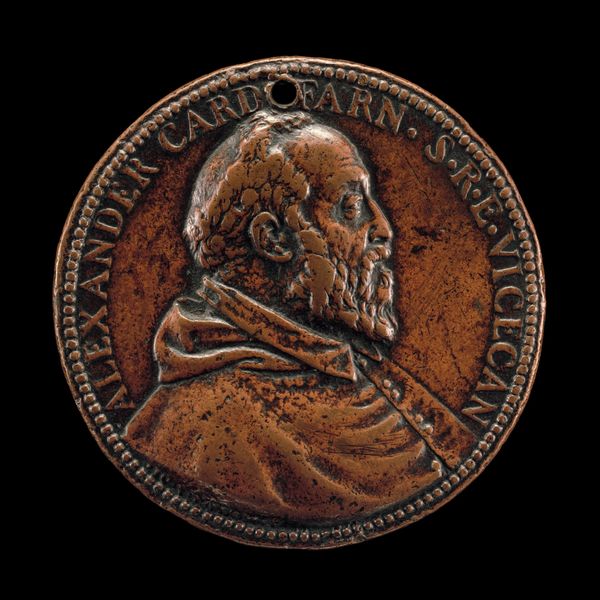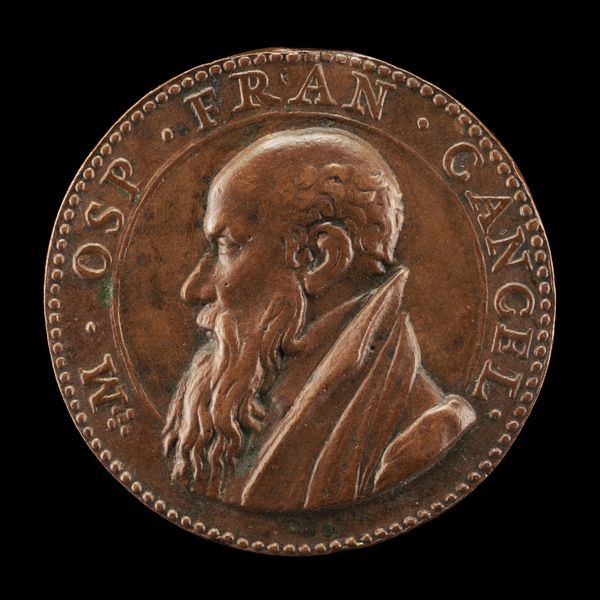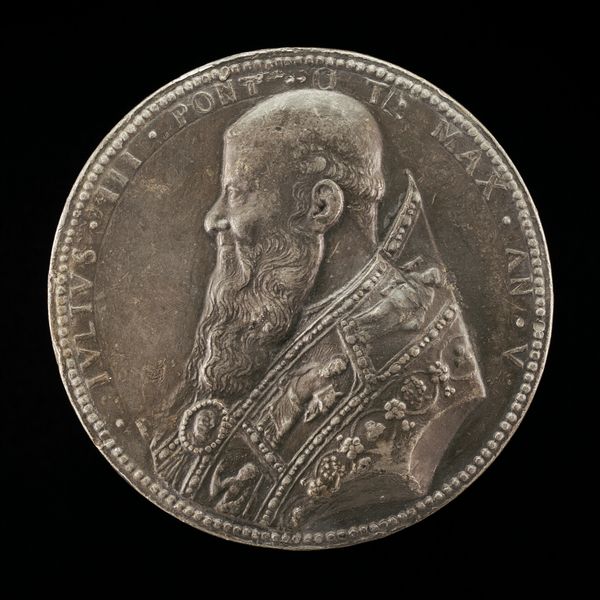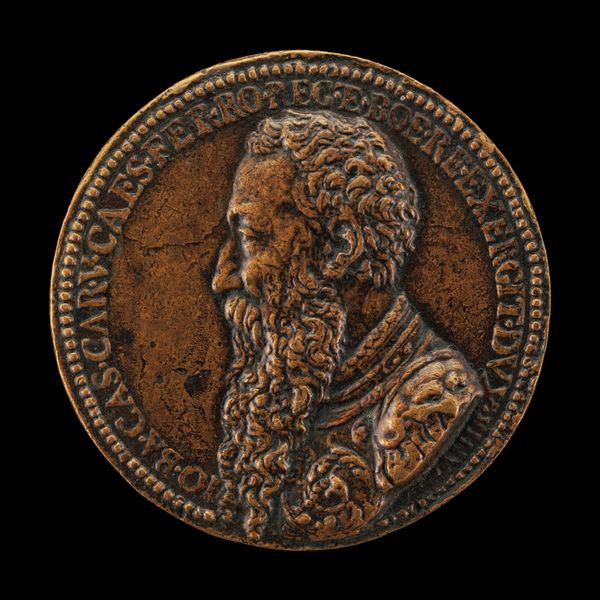![Paul V (Camillo Borghese, 1552-1621), Pope 1605 [obverse] by Giacomo Antonio Moro](/_next/image?url=https%3A%2F%2Fd2w8kbdekdi1gv.cloudfront.net%2FeyJidWNrZXQiOiAiYXJ0ZXJhLWltYWdlcy1idWNrZXQiLCAia2V5IjogImFydHdvcmtzLzZjYTk0M2U4LWU2NjAtNGU3OS1hY2Q3LWMxYTIxYmQxZjUxZi82Y2E5NDNlOC1lNjYwLTRlNzktYWNkNy1jMWEyMWJkMWY1MWZfZnVsbC5qcGciLCAiZWRpdHMiOiB7InJlc2l6ZSI6IHsid2lkdGgiOiAxOTIwLCAiaGVpZ2h0IjogMTkyMCwgImZpdCI6ICJpbnNpZGUifX19&w=3840&q=75)
Paul V (Camillo Borghese, 1552-1621), Pope 1605 [obverse] 1619
0:00
0:00
relief, bronze, sculpture
#
portrait
#
medal
#
baroque
#
sculpture
#
relief
#
bronze
#
sculpture
#
italian-renaissance
Dimensions: overall (diameter): 3.9 cm (1 9/16 in.) gross weight: 30.79 gr (0.068 lb.) axis: 12:00
Copyright: National Gallery of Art: CC0 1.0
Curator: This bronze relief sculpture is a medal, created by Giacomo Antonio Moro in 1619, and it features a portrait of Paul V, also known as Camillo Borghese, who was Pope from 1605. Editor: Its immediate presence is striking. The meticulous detail within the relief evokes a powerful sense of solemnity. It feels rather heavy. Curator: Yes, the medium is critical here. Bronze lends a certain permanence and authority. The piece demands close looking. Note how Moro uses the relief to build a sense of the Pope's character – observe the planes of his face and the weight of the papal garments. We can consider how semiotics might explain that, considering the textures of skin, cloth and hair are meant to tell a specific story. Editor: Right, but the sheer labor involved is also compelling. Think about the lost wax process involved to create a mould for this medal, and then cast this weighty bronze, each strike potentially yielding another identical form. Here’s material transformed by the hands of many – Moro perhaps just the originator of the design in wax. Curator: The visual elements clearly denote power: the elaborate detailing of his robes, the inscription "PAVLVS.V.BORGHESIVS.RO.P.MAX.," encircling the portrait. It establishes the symbolic authority he held within the Catholic Church. Moro has masterfully constructed a visual symbol of papal power, carefully arranging each element within the circular composition. Editor: The casting process hints at replication, the means to distribute the pontiff's image widely through votive practices or diplomatic exchange. Considering this object was part of a vast bureaucratic apparatus distributing indulgences or Papal authority, one thinks of craft existing almost industrially to propagate belief. Curator: Yes, and by focusing on Moro’s formal arrangement of the relief, its subtle play of light and shadow, we reveal an ideal representation that served its propagandistic function beautifully. Editor: Absolutely, but perhaps what endures for me is how this crafted object once served, and materially enabled, immense ideological power.
Comments
No comments
Be the first to comment and join the conversation on the ultimate creative platform.
